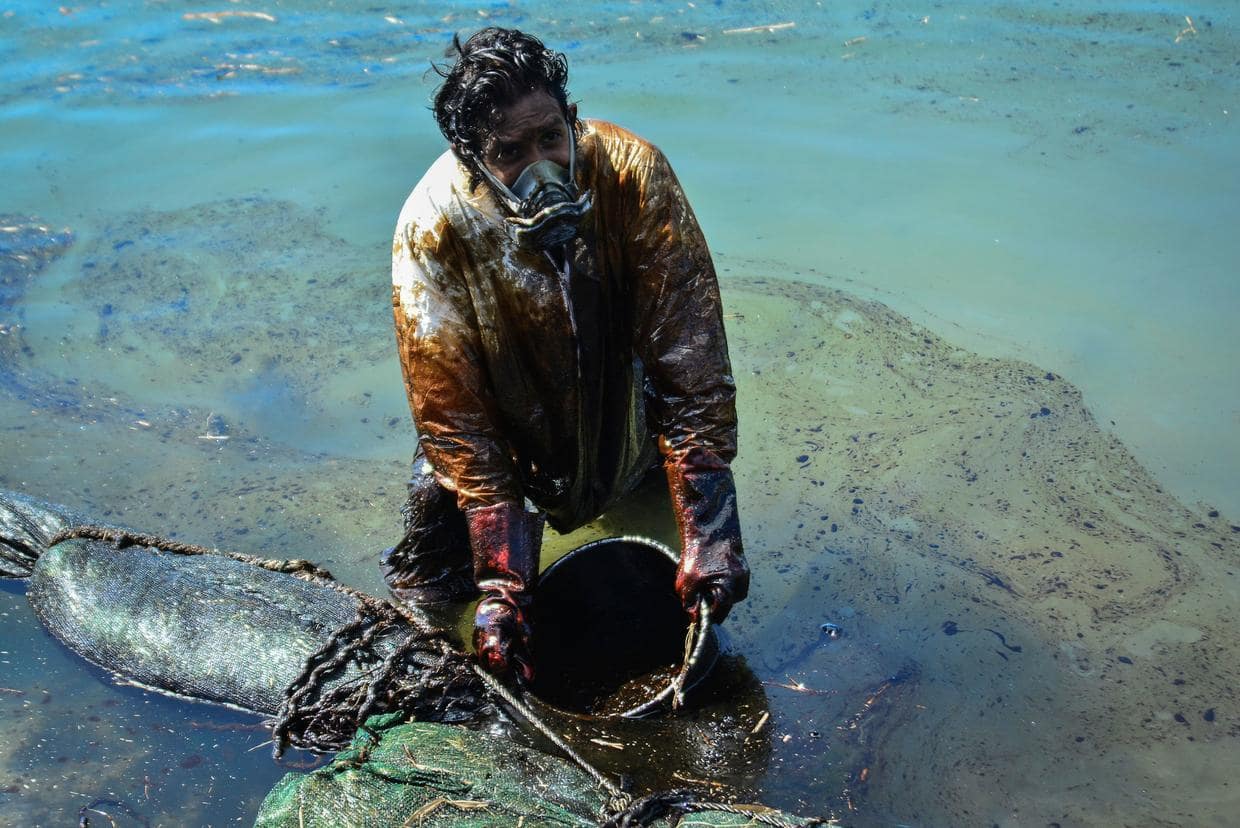
A ship is currently spilling oil just off the coast of Mauritius, causing a marine calamity. The Japanese tanker MV Wakashio ran aground on July 25 but did not immediately start leaking. On August 6, oil began to seep from the ship through large cracks that formed in the hull. As crews pumped oil out of the ship over 1,000 metric tons spilled from the hull. On the afternoon of August 15, the ship broke into several pieces spilling more oil into the water.
Mauritius is a small island nation in the Indian Ocean off the east coast of Madagascar. The entire country is just 760 sq. mi. and has a population of just 1.26 million. Mauritius relies on fishing and tourism to run the economy both of which are now being threatened. Rough seas have hampered efforts to contain the spill. Many locals have resorted to wading in the polluted water to soak up the oil with grasses and other absorbent materials to stem the environmental damage.
Ecological Disaster

The area around where the ship ran aground on a coral reef is a protected marine area. It has a diverse population of fish and coral along with vast mangrove forests along the nearby shoreline. The immediate impacts are all too obvious. Animals covered in the thick goo, many already dead from the toxic oil, are just the first casualties from the spill. Coral will quickly die off in the surrounding area because they are so delicate. The lush seagrasses, which help protect the island from damaging surf, will begin to die soon as well.
“If things continue to go the way they are the future prospects for coral reefs look very, very bleak indeed.”

While the calamity is still unfolding one thing is certain–it will be decades before the area recovers. For parts of the surrounding marine area, it is unlikely for the corals to ever recover. If the oil reaches the mangroves and enters the sediment the trees will likely die along with the animals that rely on those trees for survival.
Mauritius has limited resources to clean up oil spills and shipwrecks, which has slowed the recovery process. French boats from a nearby territorial island were dispatched to assist in removing the remaining oil from the ship. Helicopters were also used to airlift fuel to shore as they raced against time. In addition to the limited resources, rough seas and bad weather has slowed cleanup efforts and spread the oil slicks faster.







